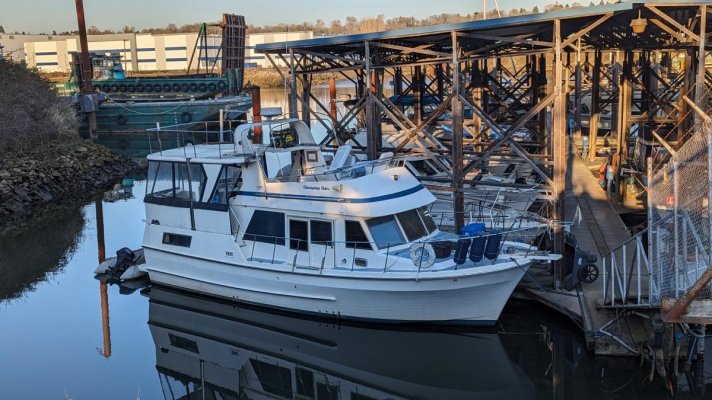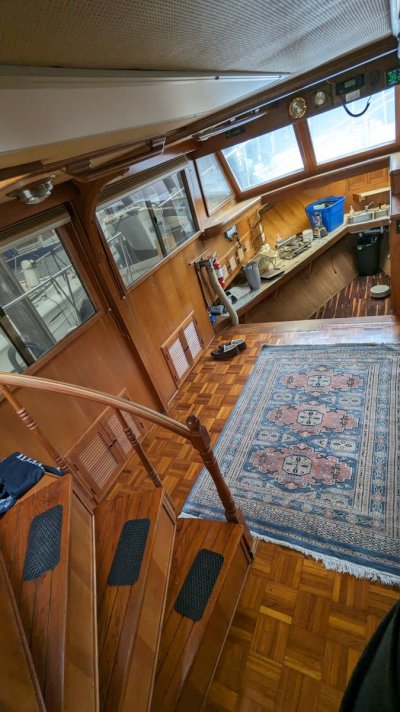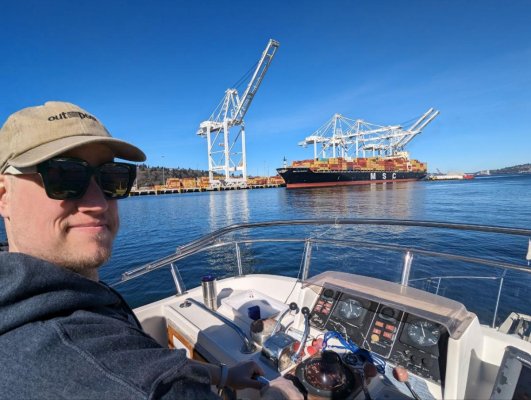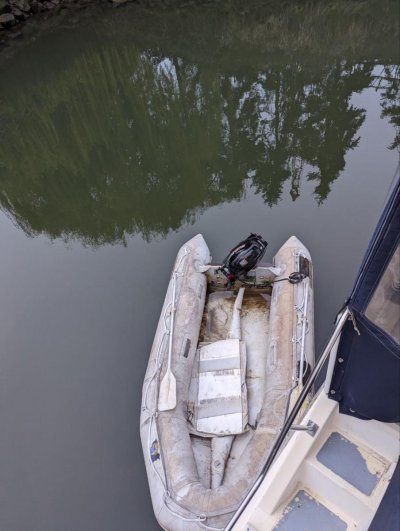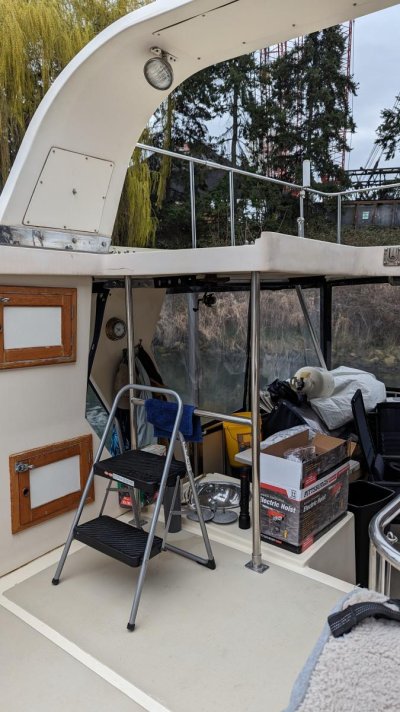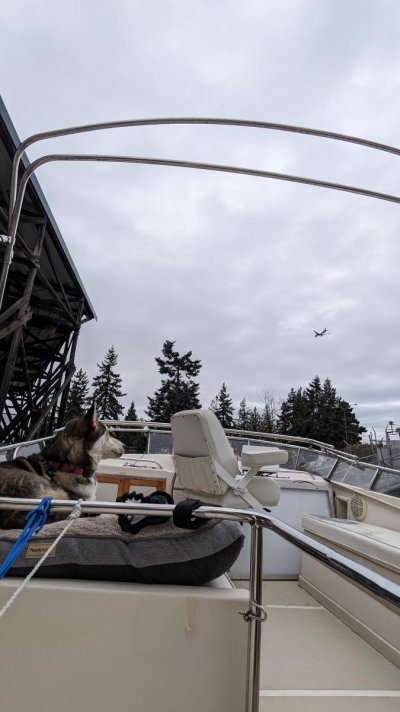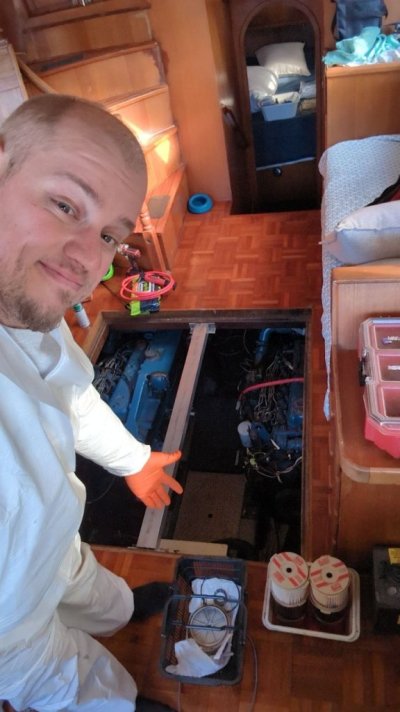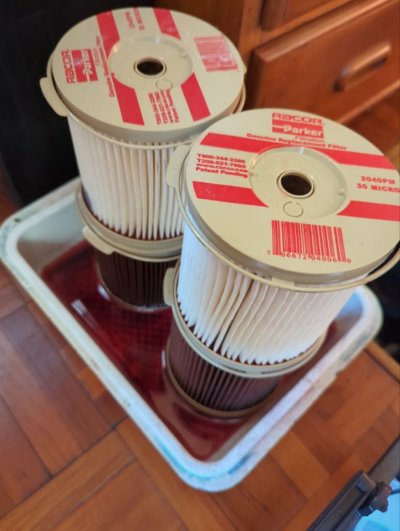PNW
Member
- Joined
- Mar 22, 2024
- Messages
- 17
- Location
- Seattle, WA
- Vessel Name
- Changing Tides
- Vessel Make
- 1985 CHB 38' Trawler
I'm Josh and my wife and I just picked up a Taiwan trawler for week-long trips around the Salish Sea, and day trips to Blake Island and back.
The ship is an '85 CHB 38' with twin Perkins. I don't really know a lot, as my previous were sailboats, but I'm currently not working and am making it my full time job to dive in and Begin understanding all the systems on board and their capabilities and maintenance schedules.
I have owned some old 70's sailboats, up to 34', so I'm pretty excited to move to an entirely different platform. I have off-grid dreams and this has tons of potential. I just need to make sure I don't take too many big risks in the beginning, and that's where I would LOVE your help, I want to just start putting all my questions out there and then my job is just soak up all the knowledge in the replies and go put in the hours of practicing it.
Here's what I have learned so far about the new boat, M/V Changing Tides:
A few main draws, I wanted to take long trips without insane fuel costs so diesel was a major focus of this idea. This vessel has Twin Perkins 185hp Turbo Diesel engines, and an Onan Diesel 8kW genset (not currently working, needs injectors serviced), and 400 gallons of fuel storage, so that seemed like a very good platform foundation from my limited knowledge.
boat type: trawler
condition: good
engine hours (total): 2200
length overall (LOA): 38
make / manufacturer: Fu Hwa
I had no prior knowledge about trawlers specifically but have known a handful of couples and single friends over the years who liveaboard around the Seattle area, and most of them lived in this shape of vessel, so when my wife and I decided it was time to focus on our Nautical Adventure Hilarity dreams, trawlers were top of my list. I knew they went slow forever and had tons of cargo space. One thing I had dreamed of doing on my Columbia 34 was to turn the v-berth into the galley as I've always felt those tiny v-beds were impossible to sleep in and generally became a storage zone. As you can see in the photos the previous owner actually managed to implement my exact dream scenario in a twin turbo diesel yacht, so I was in love soon as I saw that part!
I took the boat out twice during sea trials so I know I can confidently exit and enter the marina and dock without issue, as long as I have at least one crew mate to assist as I'm recovering from hip replacement surgery so I can't be running all over this thing with agility and nimble grace at the moment to solo dock it, just don't feel comfortable. What I want to know from the TF community is:
What is the minimum I need to know and be GOOD at before I can safely take my family out into the open Puget Sound?
I'm extremely risk averse and boating is one of the ways I streeeeeeeetch my comfort zone. So by default I want to read all the manuals, understand how all systems work, how they break, how to service and maintain them, and go through everything to make sure it works and has a backup if it's a critical system. Then go get my 100T Coast Guard license and then get in like 100 hours of time behind the helm.
In reality, when I got my first sailboat I hadn't even taken a class on it and I just took it out and figured it out and was scared outta my mind and could have easily died.
So I know there is a middle ground to reasonable preparation before a reasonably small outing, and then just going out longer, farther over time, but I need help with what's reasonable for this boat and the risks.
This has turned into a much, much longer intro post than I meant to write, but I'm trying to provide enough context to be interesting haha!
Cheers,
Joshua
The ship is an '85 CHB 38' with twin Perkins. I don't really know a lot, as my previous were sailboats, but I'm currently not working and am making it my full time job to dive in and Begin understanding all the systems on board and their capabilities and maintenance schedules.
I have owned some old 70's sailboats, up to 34', so I'm pretty excited to move to an entirely different platform. I have off-grid dreams and this has tons of potential. I just need to make sure I don't take too many big risks in the beginning, and that's where I would LOVE your help, I want to just start putting all my questions out there and then my job is just soak up all the knowledge in the replies and go put in the hours of practicing it.
Here's what I have learned so far about the new boat, M/V Changing Tides:
A few main draws, I wanted to take long trips without insane fuel costs so diesel was a major focus of this idea. This vessel has Twin Perkins 185hp Turbo Diesel engines, and an Onan Diesel 8kW genset (not currently working, needs injectors serviced), and 400 gallons of fuel storage, so that seemed like a very good platform foundation from my limited knowledge.
boat type: trawler
condition: good
engine hours (total): 2200
length overall (LOA): 38
make / manufacturer: Fu Hwa
I had no prior knowledge about trawlers specifically but have known a handful of couples and single friends over the years who liveaboard around the Seattle area, and most of them lived in this shape of vessel, so when my wife and I decided it was time to focus on our Nautical Adventure Hilarity dreams, trawlers were top of my list. I knew they went slow forever and had tons of cargo space. One thing I had dreamed of doing on my Columbia 34 was to turn the v-berth into the galley as I've always felt those tiny v-beds were impossible to sleep in and generally became a storage zone. As you can see in the photos the previous owner actually managed to implement my exact dream scenario in a twin turbo diesel yacht, so I was in love soon as I saw that part!
I took the boat out twice during sea trials so I know I can confidently exit and enter the marina and dock without issue, as long as I have at least one crew mate to assist as I'm recovering from hip replacement surgery so I can't be running all over this thing with agility and nimble grace at the moment to solo dock it, just don't feel comfortable. What I want to know from the TF community is:
What is the minimum I need to know and be GOOD at before I can safely take my family out into the open Puget Sound?
I'm extremely risk averse and boating is one of the ways I streeeeeeeetch my comfort zone. So by default I want to read all the manuals, understand how all systems work, how they break, how to service and maintain them, and go through everything to make sure it works and has a backup if it's a critical system. Then go get my 100T Coast Guard license and then get in like 100 hours of time behind the helm.
In reality, when I got my first sailboat I hadn't even taken a class on it and I just took it out and figured it out and was scared outta my mind and could have easily died.
So I know there is a middle ground to reasonable preparation before a reasonably small outing, and then just going out longer, farther over time, but I need help with what's reasonable for this boat and the risks.
This has turned into a much, much longer intro post than I meant to write, but I'm trying to provide enough context to be interesting haha!
Cheers,
Joshua

